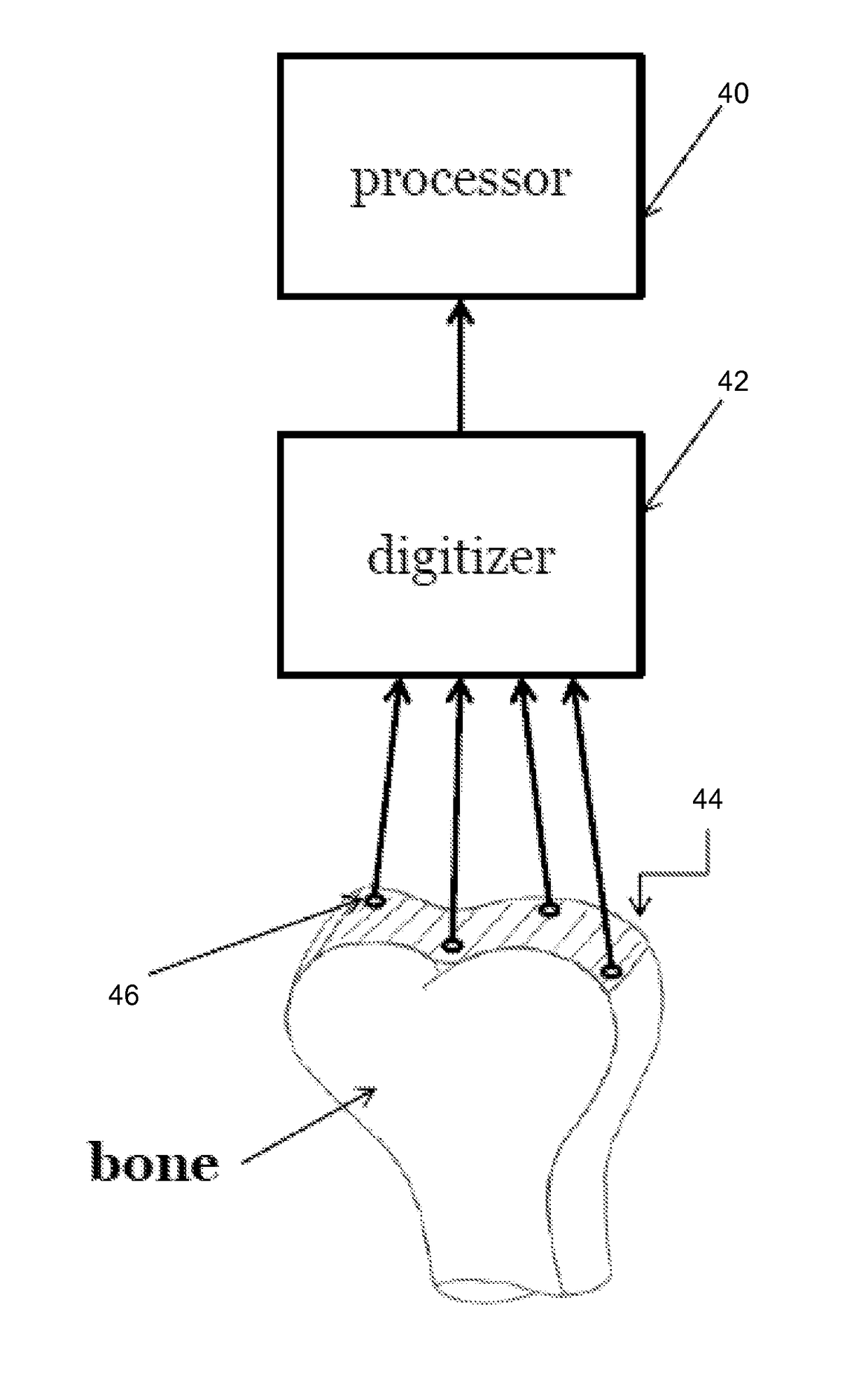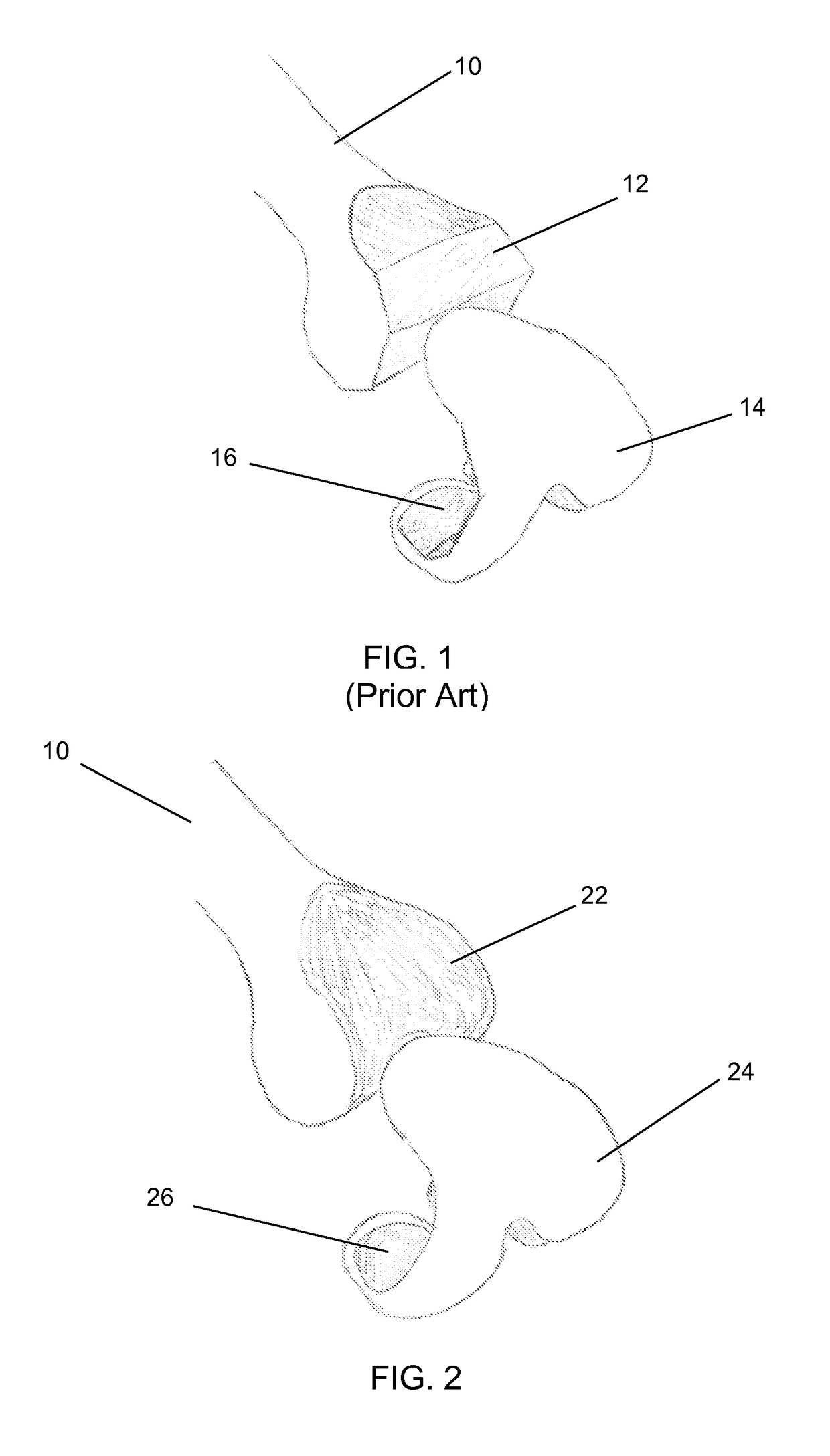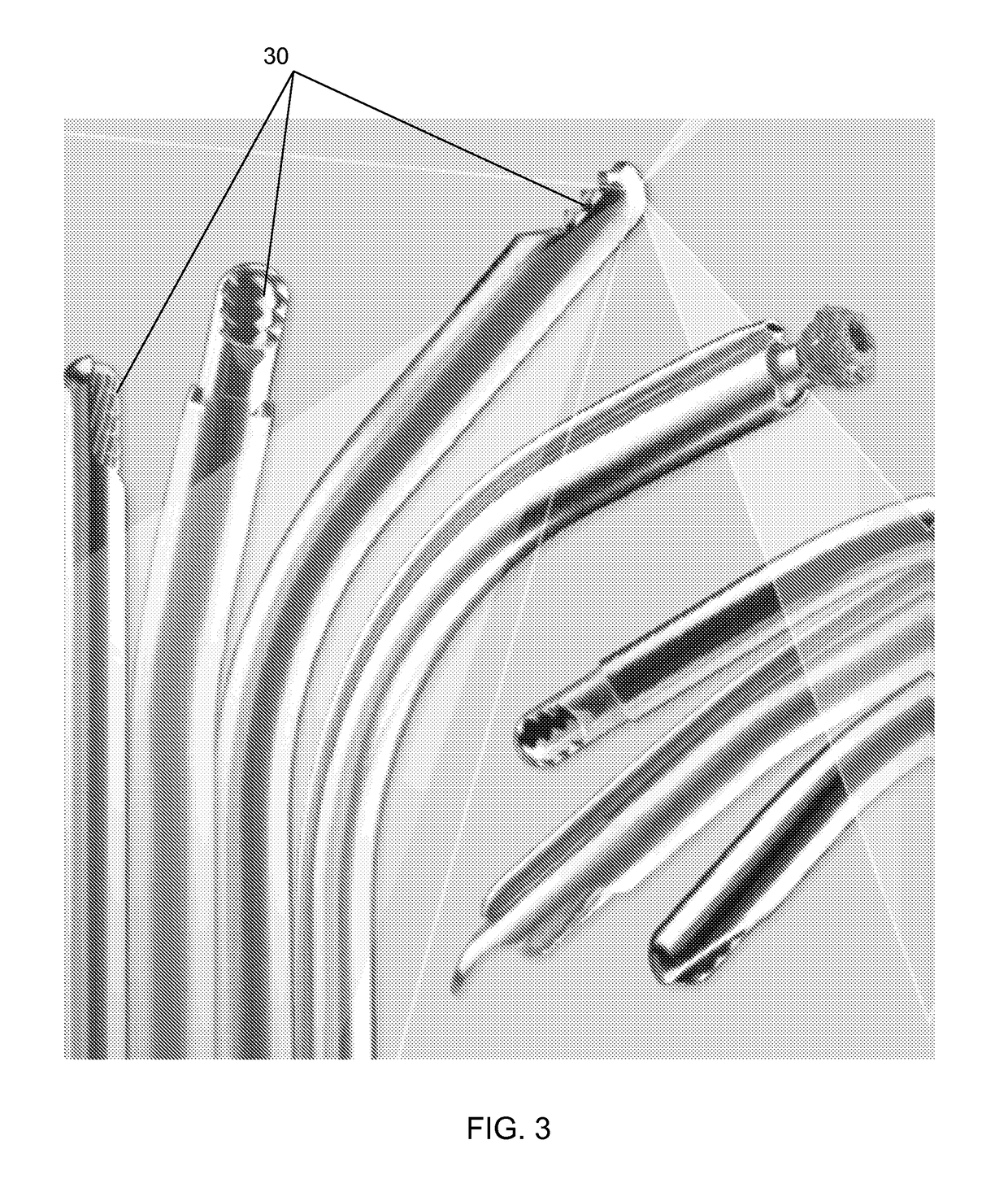Rotatable curved bit and robotic cutting in orthopaedic applications
a robotic cutting and curved bit technology, applied in the field of orthopaedic procedures, can solve the problems of joint pain, joint tearing, traumatic events, and inability to accurately create rounded surfaces using conventional manual tools, and achieve the effect of avoiding traumatic events, reducing the risk of traumatic events, and reducing the accuracy of traumatic events
- Summary
- Abstract
- Description
- Claims
- Application Information
AI Technical Summary
Benefits of technology
Problems solved by technology
Method used
Image
Examples
Embodiment Construction
[0017]The present invention has utility for the application of curved blades and drill bits with precise robotic control for the creation of exact curved surfaces or other congruent surfaces within or on bones that replicate the curved surfaces or any other non-linear surfaces of implants during orthopaedic procedures. A system and process is provided for a surgeon to rapidly and accurately use curved blades or drills with precise robotic control to create highly accurate curved surfaces on or within bone for joint arthroplasty.
[0018]While rotatable curved blades and drill bits have been available and used for ear, nose, and throat (ENT) procedures, such as ethmoidectomy or urcinectomy, these surgical tools have never been applied to orthopaedic surgery. Furthermore, curved blades and drill bits have never been combined with software driven robotic control, and these surgical tools have been primarily designed for use with hand tools, which allows them to be used in the curved cavit...
PUM
 Login to View More
Login to View More Abstract
Description
Claims
Application Information
 Login to View More
Login to View More - R&D
- Intellectual Property
- Life Sciences
- Materials
- Tech Scout
- Unparalleled Data Quality
- Higher Quality Content
- 60% Fewer Hallucinations
Browse by: Latest US Patents, China's latest patents, Technical Efficacy Thesaurus, Application Domain, Technology Topic, Popular Technical Reports.
© 2025 PatSnap. All rights reserved.Legal|Privacy policy|Modern Slavery Act Transparency Statement|Sitemap|About US| Contact US: help@patsnap.com



